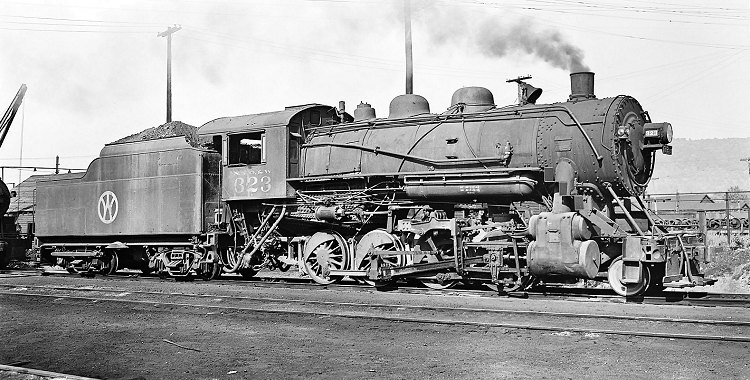The NYO&W's earlier Consolidation types were of the "camelback" design, but in 1911 ALCo's Cooke works of Patterson, New Jersey began delivery of the W class with a conventional firebox arrangement. There is conflicting information about their specifications and classification. According to one source the W class was delivered with 56-inch drivers, which were later enlarged to 58 inches by increasing the thickness of the tires. Whether this was the occasion for reclassifying some of the engines to W-2, or whether that occurred when they were superheated in the 1920s, is uncertain. Dimensions for the W-2 class, as modified by the NYO&W, included 190 p.s.i. of boiler pressure, 22x32-inch cylinders, and a locomotive weight of 215,500 pounds. They developed a tractive effort of 48,100 pounds. Their grate area totaled 50 square feet, their evaporative heating surface 2566 square feet, and their superheater surface 682 square feet. This image, from Carl Weber's collection, shows No. 323 of the class at Norwich, New York, in April 1945. The lensman remains anonymous.

|
|
|